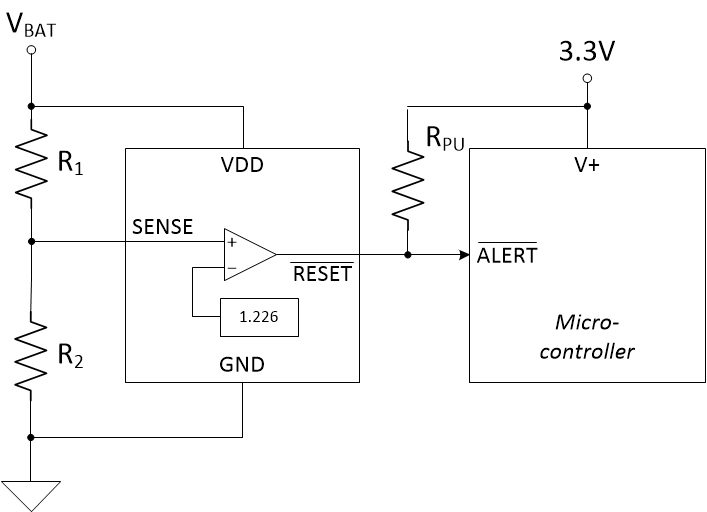JAJSPA8 September 2020 TLV4011-Q1
PRODUCTION DATA
8.2.1 Undervoltage Detection
Undervoltage detection is frequently required in battery-powered, portable electronics to alert the system that a battery voltage has dropped below the usable voltage level. Figure 8-1 shows a simple undervoltage detection circuit using the TLV4011-Q1 which is a non-inverting comparator with an integrated 1.226 V reference and an open-drain output stage. A non-inverting is well suited for this application since the micro-controller requires an active low signal when an undervoltage level occurs.
 Figure 8-1 Undervoltage
Detection
Figure 8-1 Undervoltage
Detection